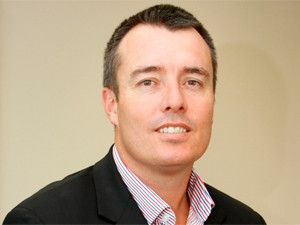
The South Africa Broadband Policy issued in November 2013 by the Department of Communication states that the lack of always-available, high speed and high quality bandwidth required by business, public institutions and citizens has impacted the country's development and global competitiveness negatively.
The slow deployment of fixed broadband services (ADSL), and its relatively high cost, meant that over the last five years mobile broadband rapidly became the primary form of broadband access; rather than providing a complementary service to fixed broadband as it has done in mature economies.
Connectivity and access is intricately linked to our economic growth and as SA has fallen behind some of its African counterparts, there is now a huge emphasis on solving connectivity problems, says Hendrik du Plooy, general manager of sales at Broadlink. "In many respects it has created another layer of haves and haves nots - as bigger business can afford the premium services needed to run a globally competitive business, while smaller businesses have to make do with consumer-type services," he says.
According to Mohammad Patel, the chairperson of the Wireless Access Providers' Association (WAPA) the cost of connectivity in SA remains relatively high compared to the rest of the world. "In large part, this is due to high ADSL line rental costs from Telkom and the bundled telephone line."
He says, however, WAPA expects competition to continue to increase, and prices to continue to drop, at least in urban areas. "The challenge of providing high quality 'last mile' solutions in rural areas is well suited to the WISPs that are WAPA members, so we expect also to see partnerships between larger wholesalers or nationwide B2C brands and regional ISPs. Collaboration between players with complementary offerings will enable the introduction of new products and services, and services to be provided to less traditionally profitable customers rather than competition for the same customers, which drives down prices for those customers but does not provide a broad benefit," he explains.
Du Plooy believes infrastructure and availability remain a concern. "In many areas connectivity infrastructure is scarce and in some areas nonexistent," he says.
He believes although main metro areas are fairly well covered by a number of access technologies, businesses outside of these areas still battle to get access to reliable, business quality connectivity. "Getting connectivity to businesses, in particular the last mile, is still a challenge and large portions of SA are under-catered for on the business front," explains du Plooy.
SA, like most growing markets, will face connectivity challenges as networks try to keep up with the demand from consumers and businesses, according to Reshaad Sha, chief strategy officer at Dark Fibre Africa. "The important aspect to focus on is how quickly these are resolved and capacity needs to be built out proactively to avoid connectivity problems in the future," he advises.
This year, we will see increased competition and dropping prices, especially on ADSL services.
Mohammad Patel, the Wireless Access Providers' Association
"The connectivity challenge is further exacerbated specifically in the voice networks due to the scarcity of wireless spectrum. Additionally, broadband penetration in SA is dominated by wireless options which does put a major strain on the wireless infrastructure providers to meet the consumer and business demand. Fixed broadband penetration and availability needs to be increased significantly to alleviate the load from mobile networks as many businesses and consumers use mobile broadband as a replacement for a fixed broadband connection," Sha explains.
"Millions of smartphone users know from painful experience that trying to get decent connection in congested environments including the likes of stadiums and public venues such as shopping malls is usually impossible as the demand for connectivity exceeds supply," states Michael Fletcher, sales director at Ruckus Wireless sub-Saharan Africa. "Smartphones and flat-rate data plans are clogging cellular networks with data traffic - often making it difficult, if not impossible, to hold even a simple phone conversation during rush hours in big cities," he says.
SA's mobile data growth
Source: Cisco(R) Visual Networking Index
From 2013 to 2018, Cisco anticipates that mobile traffic growth will be double fixed traffic growth in SA. The following trends are driving mobile data traffic growth:
More mobile users: In SA, there will be 40 million mobile users by 2018, up from 38 million in 2013. Globally, there will be 4.9 billion mobile users, up from 4.1 billion in 2013.
More mobile connections: There will be 98 million mobile-connected devices by 2018, approximately 1.8 per capita for SA. The global number will be more than 10 billion mobile-ready devices/connections by 2018.
More mobile video: Video will be 78% of SA's mobile data traffic by 2018, compared to 50% at the end of 2013. Globally, video will represent 69% of mobile data traffic in 2018, up from 53% in 2013.
He cites mobile data traffic today is growing 2.4 times faster than global fixed broadband data traffic, with the average mobile broadband connection generating about 1.3GB per month. "By 2014, the average connection is expected to see 7GB per month," he says.
Because of this, Fletcher says, operators are under tremendous pressure to offer faster data speeds to keep up with insatiable user demand for media-rich applications. "And the implications are dire: the cost of transporting data is expected to outpace revenue. And a poor user experience resulting from network congestion will result in churn, one of the largest costs carriers incur. Carriers in every major market around the world including SA are putting to work any and every tool they can get their hands on, as quickly as possible, to offload data traffic from their cellular networks."
He believes over the next couple of years, we'll likely see a flurry of activity as operators look to add more radio equipment to high-traffic areas, increase the bandwidth of backhaul links, implement traffic controls in the network core, acquire new or re-purposed spectrum and most importantly, embrace WiFi.
Fixed-line alternatives
To deal with the challenges associated with fixed-line bandwidth, many businesses are looking at alternatives including fixed wireless services, satellite, WiFi and mobile.
According to du Plooy, SMEs have previously relied heavily on fixed-line technology such as ADSL or Diginet. "While ADSL services and offerings have become more attractive, copper theft is still a real concern in the country, making it less reliable as a primary access medium. In many cases, fixed wireless services (ie microwave) are seen to be a viable alternative for these businesses," he explains.

For businesses operating in outlying areas, he says, satellite-based connectivity is often the only available option. "Fortunately, satellite as a connectivity medium has come a long way in the last two years and the products on offer are far better geared for business use and applications than they were previously. A challenge, however, is that there are only a handful of operators with the necessary skills and resources that an ISP can partner with and deployment is still a challenge in some countries for a number of reasons such as legislation, and business culture."
In the metro areas, du Plooy says, fibre continues to dominate the business connectivity wish list and in response, service providers have started developing more innovative and affordable fibre-based solutions. "However, the implementation of fibre is still expensive and potentially involves very long lead times. Fibre infrastructure in areas outside of the metros is still an issue - and not one we will see changing significantly very soon."
WiFi is reported to be a big area of growth in the industry. "The technology has been known and available for some time, and the massive growth of mobile devices means consumers now expect WiFi availability wherever they go," du Plooy says.
In many areas connectivity infrastructure is scarce and in some areas nonexistent.
Hendrik du Plooy, Broadlink
According to Fletcher, WiFi represents one of the most expedient and cost-effective ways to increase both capacity and coverage of cellular networks, with a tight focus on where traffic is heaviest. "As a result, operators are taking a much more strategic view of WiFi, tapping a new generation of smarter technology that gives it the reliability and sophistication to become a full partner within mobile network infrastructure, and on a much larger scale."
Cisco's Visual Networking Index Global Mobile Data Traffic Forecast for 2013 to 2018 forecasts by 2018, 33% of mobile traffic will be offloaded onto Wi-Fi/small cell networks, up from 20% in 2013. 'Offload' refers to traffic from dual mode devices and supports cell and Wi-Fi connectivity (excluding laptops) over WiFi and small cell networks.
South Africa's broadband targets
Source: National Broadband Policy 2013
By 2016 - 50% of population to have Internet access at 5Mbps
By 2020 - 90% of population to have Internet access at 5Mbps and 50% of population to have Internet access at 100Mbps
By 2030 - 100% of population to have Internet access at 10Mbps and 80% of population to have Internet access at 100Mbps
Craig Zeeman, director: transformation and service provider, Cisco, believes with the arrival of several international data cables to the country's shores, focus has shifted to addressing and improving connectivity within SA, by building national and city-wide fibre-optic cable networks. "The mobile environment, for example, has been challenged to keep up with the exponential technology and Internet growth, in part because of limitations on access speed. The wider-scale deployment of technologies such as LTE will undoubtedly help to remedy this issue," he says.
LTE
In January, the Global Mobile Suppliers' Association released the latest update to its LTE report, revealing that, to date, 263 LTE networks have commercially launched in 97 countries.
Two hundred and sixty operators had commercially launched LTE services in 95 countries by 31 December last year - an exact realisation of the GSA's July 2013 forecast. Last year, 112 LTE networks were unveiled worldwide.
Says Patel, LTE is a tremendously powerful technology, and it fits well into the heterogeneous network (hetnet) strategy of mobile carriers as well as B2B solutions providers. "Point-to-point LTE can deliver high speed connectivity to areas that may be challenging for fixed-line or licence-exempt services," he states. "LTE will primarily be used to deliver mobile connectivity as a better, faster form of 3G, and that this will accelerate when more spectrum is allocated," he says.
According to du Plooy, the telecommunications market is definitely heading towards LTE and it is becoming more of a reality with a number of rollouts set to go live this year. "It still has many challenges and it will be interesting to see how this service impacts service on a business level in time to come. It might become an option for smaller-based companies, in a fixed wireless scenario, to replace fixed-line technology."
No single technology can ever provide for the wide ranging connectivity requirements of a country, Sha believes. "LTE is an important technology for delivering broadband services to a broad range of consumers, especially with the absence of a large scale fixed-broadband network. Similar to 3G deployments, wide scale adoption of LTE devices and services can really only be achieved as the LTE coverage in SA increases. The associated experienced speeds of LTE will continue to have small incremental changes especially if the appropriate spectrum bands are released to operators to increase their footprint," he says.

Zeeman agrees the transition from 3G to 4G will take several years, as is the case still with the transition from 2G to 3G. "As a result, telecommunications operators in SA must look for strategies and solutions that will enhance their existing 3G networks while addressing their 4G deployment requirements without requiring a complete equipment upgrade," he explains.
Cisco's Visual Networking Index predicts 4G will account for 39% of total mobile data traffic by 2018, compared to 9% at the end of 2013. It also cites by 2018, 4G connections will support 13.8% of all connections, up from 1.1% in 2013.
The year ahead
For the remainder of 2014, says Patel, the industry can expect more of the same with regards to broadband. "This year, we will see increased competition and dropping prices, especially on ADSL services," he says. "Additionally, more telecoms providers such as MWEB, Telkom and Afrihost will introduce or continue to push converged offerings of home and mobile connectivity, as well as delivery of content over existing connections to both consumers and businesses."
Broadband penetration in SA rapidly is expanding and today, over 60% of Internet traffic generated on the African continent originates is from SA, states Zeeman. "South African mobile data traffic will continue its remarkable growth, increasing nearly eight-fold over the next five years and growing twice as fast as fixed IP traffic in SA. Such growth is indicative of mobility becoming a critical characteristic of almost every network experience and the value consumers and businesses place on it," he says.
Smartphones and flat-rate data plans are clogging cellular networks with data traffic.
Michael Fletcher, Ruckus Wireless
According to Sha, 2014 will be the year of the enterprise, specifically enterprise connectivity on fibre as the medium. "The hype around cloud-based applications and big data in general are now starting to become a reality for South African businesses. The enabling infrastructure for these business does to a large extent need to be supported by some form of high speed connectivity. Fibre to the business is largely the solution, specifically in metro areas," he explains.
It seems the government is taking the communications ministry more seriously since they approved the National Broadband Policy last year, says Fletcher. "Achieving its targets will certainly result in significant economic growth, development and job-creation. What's more, government has also set targets to have all schools, clinics, general public sector and government facilities connected by 2020, so the momentum going into 2014 is positive."
Share